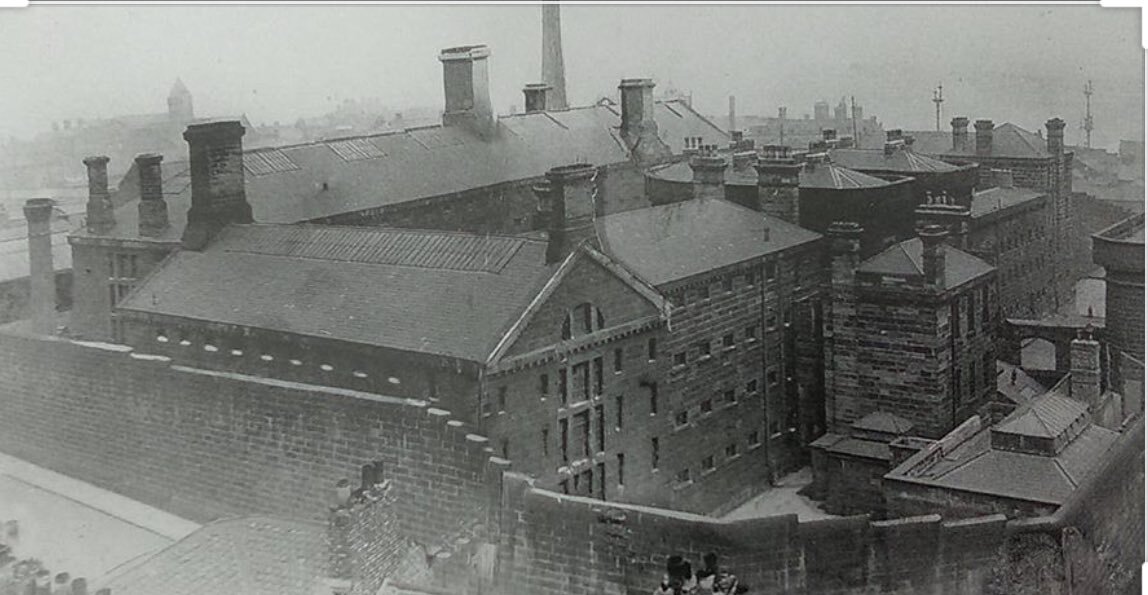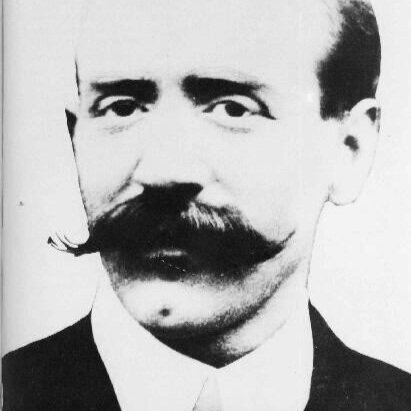
Life Inside
Although it only had a short-lived history the gaol played host to many fascinating and tragic stories. Life Inside is a repository for some of these remarkable moments and also a collection of short and engaging articles on life in and around the gaol. These have been put together by the principal team and a selection of local experts and students.
A Long-Buried Secret
The restrictions of prison life and confinement could often take a heavy toll and in some instances even result in prisoners taking their own lives. Although a relatively uncommon occurrence, there were numerous cases of suicide at Newcastle Gaol in its fairly short history. One particularly notable case was that of Alexander Ingram in 1911.
Force feeding in Newcastle Gaol
Although most often associated with the treatment of suffragettes, force-feeding was also used more widely in prisons as a means of imposing discipline. A number of women supporting the suffrage movement went on hunger strike in Newcastle Gaol and were subjected to the ordeal of force feeding (for example, Lady Constance Lytton in 1909). However, what is less well-known is that some men held in the gaol during and after the First World War also underwent the ordeal of force feeding. These men were all Conscientious Objectors.
The Matron and the mattress
In 1834, the office of Matron at Newcastle Gaol was vacant. It was an important if onerous position. The work would be hard, monotonous, and often physically challenging.
The Remarkable Year of Governor Burgoyne
In prison histories, it is often the punishments and the criminals themselves that become the predominant focus, and other fascinating details often fall by the wayside. Nowhere is this more apparent than in the lack of knowledge of the staff who ran these institutions. So, I was really excited when Dr Shane McCorristine, the Project Lead, said he had located a portrait of a former Governor of the gaol – Captain Roderick DHU Hamilton Glenyon Burgoyne.
Who would be a hangman?
In 1883 a vacancy in the role of hangman occurred and it would appear that many North East residents were only too keen to apply. Their professions, perceived qualifications for the role and reasons for doing it offer fascinating insights into the culture of capital punishment in the period and the public’s interaction with it.
The Last Woman Executed
The first prisoner at Carliol Square Gaol to meet their death on the gallows was Jane Jameson, occasionally recorded as Jamieson, in 1829. She was to be the last woman hanged in Newcastle and suffered the further ignominy of being the last prisoner of Newcastle to be publicly dissected, an additional punishment for the crime of murder until 1832.
Did Jack the Ripper Kill in the North East?
January 26 1889 was a busy day for the staff at the Newcastle Evening Chronicle as several dramatic stories crowded for attention on the same page. Readers learned that on the previous day there were two serious collisions on the Tyne which damaged vessels, a man named Alfred Parkinson hanged himself in the gaol using an upturned bed as a scaffold, and a young woman named Jane Leod was charged with taking laudanum with intent to commit suicide. Dominating the page, however, were details of the “Terrible Tragedy at Wrekenton” in which a policeman was murdered in broad daylight in a village near Gateshead.
Dissection & Bodysnatching
One of the few relics to have survived from the Surgeons’ Hall are a set of surgical instruments that would have been used to explore the inner workings of Newcastle’s dead. So why were Newcastle’s surgeons obliged to dissect some criminal corpses, and what opinions did people have about the anatomists?
The Final Executions
On the morning of Wednesday 26th November 1919, two men (Ambrose Quinn and Ernest Bernard Scott) were executed at Newcastle prison. They were to be the last two people to ever suffer that fate at the prison and although unconnected, their crimes and profiles bore many remarkable similarities.
Suffragettes in Newcastle Gaol
Although Lloyd George was closely guarded and the city was packed with police, some WSPU activists managed to break windows at the Liberal Club, General Post Office, and Palace Theatre. These protests, later dubbed the "Battle of Newcastle", led to the arrest of 12 women who served sentences of up to one month in Newcastle Gaol. Here are some of their stories.
Coroners and Crime
The coroner may not be the first person you think about when considering the people connected with a gaol. However, as the judge tasked with investigating sudden and unexplained death, to report the death to the government, the coroner visited the gaol each time a prisoner died.
Punishment in Prison: Flogging
Across the c19th there was a marked shift away from a public system of punishment to a private one, a move which arguably reached its zenith in the 1868 Capital Punishment Amendment Act that removed execution to behind the public walls. However, whilst public punishments disappeared from sight, some of the more brutalising and barbarous punishments in the legal arsenal made an unexpected return and remained far longer than we might imagine in England’s prisons.
All The Fun Of The Fair
A feature of prisons in the nineteenth century was their location. Not in the wilds at the edge of town, but in the centre of the community- to act as a deterrent and a warning. Newcastle gaol was organised according to the ‘separate system’, a monastic approach to punishment which, in theory, meant that within the walls ‘the utmost order and quietness’ prevailed. The same cannot be said for the area around the prison in Carliol Square.
A Daring Double Escape
Researching the inmates of Newcastle’s Gaol reveals some fascinating characters, but one of the most interesting must be the man who – remarkably - was to escape from the gaol not once but twice. This story of his second escape shows him to have been a man of unusual daring, ingenuity and courage.
The Barber Surgeons & the missing statues
In Newcastle the history of medical education and anatomy overlaps with the history of crime and punishment. Connecting these two spheres was the Company of Barber Surgeons and Tallow Chandlers, a craft guild which was established in 1442 and licensed generations of men to practice surgery and barbering in the town.
A Prisoner’s Life
On the 1st day of April 1878, the borough gaol of Newcastle-upon-Tyne, in common with the other borough and county prisons throughout the United Kingdom, was by Act of Parliament handed over to the Government. Two, amongst many important objects sought to be effected by this legislative change, were the abolition of useless prisons and the creation of a uniformity of treatment in discipline and diet in the existing ones.
Judge, Jury & The Executioner
The history of hangmen is a long and complicated one and no more so than when looking at their relationship with the execution crowd. For centuries the role of executioner was a largely informal position, in some instances even undertaken by criminals themselves to avoid a harsher sentence, as was the case at the 1792 triple execution of William Winter, Eleanor and Jane Clarke. However, in the mid-nineteenth century the role was steadily professionalised and by the turn of the twentieth century it had gone from a widely deplored and despised role to a much-coveted one, which carried a sort of macabre celebrity status.
Double Execution Debut
Given the heavily restricted and private nature of executions after 1868, little information was often provided to the press to report on hangings. One place where we do get interesting historical detail though is posthumously published diaries and recollections of Hangmen. This is particularly true of one such case in Newcastle, the 1901 double execution of Uncle and nephew (John Miller and John Robert Miller).
The Last Town Moor Execution
“At an early hour this morning crowds of persons of all ages of all trades and sexes…entering the town from every direction - eagar (sic) to behold the awful tragedy which was about to take place.”
Startling suicide!
The restrictions of prison life and confinement could often take a heavy toll and in some instances even result in prisoners taking their own lives. Although a relatively uncommon occurrence, there were numerous cases of suicide at Newcastle Gaol in its fairly short history. One particularly notable case was that of Alexander Ingram in 1911.



















